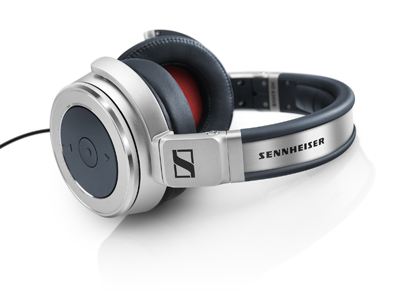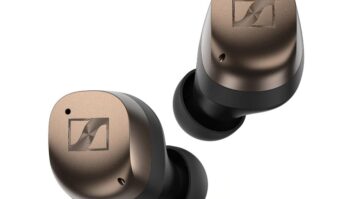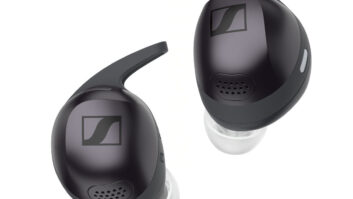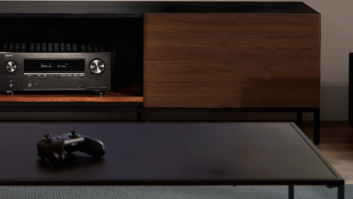
MUNICH, GERMANY — Sennheiser’s newest headphones, the HD 630VB, caught the attention of the media and consumers earlier this spring for its innovative on-ear dials that can be manually turned for enhanced bass. The cans began shipping this summer, and TWICE caught up with Manuel Ricke, a junior product manager audiophile at the company, to learn about the inspiration behind them, what it’s like participating in one of the most crowded markets in CE, and what Sennheiser has coming down the pipeline.
TWICE: How did you come up with the idea for bass dial on the HD 630VB?
What was the inspiration? It was mainly Sennheiser’s classic HDI 434 headphones that inspired us to develop the HD 630VB and especially its bass dial. Launched in 1976, the HDI 434 were a pair of infrared headphones that featured slide controls to regulate the volume on the right ear cup and came in a similar, round design as the new HD 630VB.
TWICE: Is this a design you expect to implement on future models?
When launching the HD 630VB at the High End Show in Munich in May, we received very positive feedback from our customers not only on the headphones’ excellent sound, but also on their design. With this feedback in mind, we will definitely consider implementing the HD 630VB’s design language when developing future headphone models.
TWICE: What kind of advantages does having a closed design bring to headphones vs. having an open design?
Ever since we launched our HD 414 in 1968, the open principle was the go-to design when developing audiophile headphones because an open design allowed for a more spatial and natural sound i m a g e than the closed models which were available at that time. However, with the HD 630VB, we managed to bring this spatial sound image into a closed design. Especially when on the go, closed models hold one big advantage over open headphones as they passively suppress environmental noise. So the HD 630VB enables audio enthusiasts to enjoy audiophile sound without any disturbing ambient noise.
TWICE: The HD 630VB is clearly a high-end product. What is the biggest challenge when it comes to participating in the upper end of the headphones category?
The target group of audiophile music listeners is seeking the highest standard in sound quality, design and workmanship. These high expectations our customers have of the Sennheiser brand are absolutely on par with our passion for excellence and our own exacting standards.
TWICE: The competition appears especially fierce these days, but Sennheiser has been operating since the 1940s. Is this is the most competitive period it’s ever experienced, or have other any periods rivaled it?
Just like any other company that has been in the business for this long, there have also been challenging times at Sennheiser throughout the 70 years of our existence. However, as a family-owned and financially independent company, we have been shaping and driving the audio market with game-changing innovations for 70 years now and we are determined to continue doing so.
We are an audio specialist with large R&D department in Germany and R&D offices in the U.S. and Singapore, where more than 320 specialists are working on the pursuit of perfect sound. We are confident that consumers will continue to experience and appreciate the amazing sound and substance our brand and our products provide.
TWICE: You recently partnered with Apogee for clip-on microphones for the pro market. How did that partnership come to fruition?
Our collaboration with Apogee is the result of both companies having a legacy of success in serving the professional and semi-professional markets around the globe, and recognizing a new opportunity to work together. Sennheiser combined its expertise in microphone technology with Apogee’s expertise in digital conversion, and the fruits of our collaboration were first announced at the NAB Show in April, where we introduced the ClipMic Digital and the MKE 2 digital. These products enable consumers using iPad, iPhone and iPod touch to realize extremely high quality recordings.
TWICE: Do you think the idea of high-res audio is penetrating the mainstream consumer base? Or is it still relegated to audiophiles only?
For now, we definitely see the topic of high-res audio as one of the dominant ones in the audiophile headphone market. When developing products that deliver high-res performance such as the new HD 630VB, we follow the requirements of the Japan Audio Society for products carrying the High-Resolution Audio logo. Whether the topic will become relevant for mainstream consumer products as well is something we will monitor closely in the years to come.
TWICE: Can you share any details for news coming down the pipeline from Sennheiser?
As an innovation-driven company, Sennheiser will continue playing a key role in shaping the future of audio. As for the near future, we have some exciting additions to our headphone portfolio lined up.













